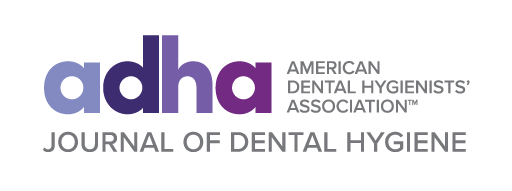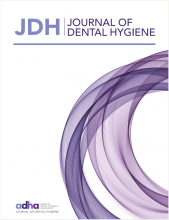Abstract
A peer-reviewed journal preserves the quality of evidence in the literature by ensuring the manuscripts and research submitted is reliable and valid. For an article to be published, it must be of significance to the profession and body of evidence, have no flaws in the methodologies, contain suitable and complete statistical analyses, and appropriately interpreted results. Peer reviewers are experts whose role is to determine the quality of the research and how it is reported, protecting the profession and the public via the evidence on which it stands. The genesis of reporting guidelines can be found in medicine’s effort to bring the quality of research methods in line with expected standards. Reporting guidelines build in quality control, requiring authors to clearly lay out the methodologies of how their research has been designed and conducted, and assisting peer reviewers in the standardized assessment of manuscripts. These reporting guidelines or “checklists” have become mainstream over the last 20 years as the means for upholding ethical, reliable, and valid research in health professions research. Reporting guidelines are simply the means for authors to easily demonstrate that their research was designed and performed in a valid manner, and that their findings are therefore reliable.
INTRODUCTION
The preparation of a research manuscript submission is just as important as the research study. The manuscript is a direct reflection of the research itself, demonstrating its rationale, design, execution, and outcomes in enough detail for the reader to replicate the work. The publication of research builds the body of evidence that influences health care practice, education, and policies while bringing recognition to the author.1 Once a manuscript is submitted, editors and reviewers have the responsibility of guaranteeing that the manuscripts published are relevant and contain reports of valid, reliable research design.2 Ensuring the appropriate research design, analyses, and interpretations is therefore imperative for all involved in the publication process.
One way to ensure this quality is through the use of reporting guidelines or “checklists”. Reporting guidelines evolved as an effort to improve research in health care, which is frequently done by clinicians whose focus is clinical care and education as opposed to research.3 As far back as the 1920’s, concerns have been raised about the quality and validity of research being published. In 1929, Dunn reported that 40 to 90% of 200 articles examined had significant errors in the methodologies, negatively impacting the validity and reliability of the research to such an extent that half of the papers should never have been published.3,4 Ensuring the inclusion of appropriate statistical analyses confers validity, transparency, and the reproducibility of research by requiring correct research design, resulting in appropriate interpretation of results and conclusions.3,5
Reporting guidelines were eventually developed by medical researchers as a remedy to the ever-growing concerns over poor research design and reporting. Reporting guidelines set strong standards for appropriate research methodologies in clinical trials. The first reporting guidelines developed were the Consolidated Standards of Reporting Trials (CONSORT) Statement in 1996. The CONSORT statement consists of a checklist and flow chart to guide researchers, reviewers, and journal readers in assessing the quality of evidence presented in a manuscript, and whether it is germane to the discipline.3 The CONSORT guidelines have since been updated to incorporate pertinent inclusions to reporting clinical trials, and were the impetus for the development of reporting guidelines across research modalities to improve the quality of health-professions research.
Reporting Guidelines
Reporting guidelines have evolved from CONSORT to cover a wide array of research approaches including electronic surveys, qualitative research, meta-analyses, systematic reviews, and many other avenues health care, animal, and engineering research. They also set benchmarks for the development of author guidelines of peer-reviewed journals. The Enhancing the Quality and Transparency of health Research (EQUATOR) Network is a free, online database of reporting guidelines created in the early 2000’s as a repository of almost 300 reporting guidelines for health care research.3
The EQUATOR Network defines reporting guidelines as, “A checklist, flow diagram, or structured text to guide authors in reporting a specific type of research, developed using explicit methodology.”6 Each reporting guideline includes what should be reported, and how the guidelines were developed, giving authors, editors-in-chief, and peer reviewers valid guidance on what should find included in the research manuscript.6 The most common and updated reporting guidelines can be found in statement papers that give background and context to the checklist.7 Authors can also find a number of additional resources on the EQUATOR Network to help in the development of exemplary research manuscripts.
As noted, there are myriad types of reporting guidelines, depending upon the type of research design being reported in a manuscript. Some of the most commonly used guidelines in dental research are shown in Table I. Regardless of the research design, reporting guidelines safeguard and improve research by holding researchers accountable. By outlining the minimum information needed to demonstrate valid and reliable research in a manuscript, the transparency conferred by using checklists enables editors, reviewers, and readers to easily critically appraise the manuscript to determine if the study was well designed, conducted and reported.8-9 Simply put, the reader does not have to guess at how the author arrived at the results and conclusions presented in the paper, and should be able to reproduce the study. Transparency and reproducibility are of critical importance, because poorly designed and inadequately reported research actually harms the body of evidence for decision making, reducing the ability to execute meta-analyses, and ultimately can negatively impact patient care.4,8
Common Reporting Guidelines for Dental Research
Importance of Reporting Guidelines in Manuscript Preparation
Reporting guidelines help authors in two ways. First, they are an excellent guideline when designing a study to ensure all key components are included and help to avoid bias. Reporting guidelines focus on clear, specific reporting of the methodologies and results, but do not dictate how to conduct research.9-10 Reporting guidelines can be viewed as guard rails that help authors fill in common gaps in reporting their work that can potentially render the research invalid.
Secondly, reporting guidelines assist authors in developing a manuscript that makes it valuable to the intended audience, by making critical appraisal of their work transparent.10 Reporting guidelines are the means of helping authors, peer reviewers, and editors expectations align. Insufficient reporting can be found in all elements of a manuscript from the abstract to the references. By utilizing reporting guidelines, authors can potentially improve their chances of publication by ensuring the appropriate inclusion all relevant components from the reporting guidelines for the type of research conducted. Doing so reduces common questions that can detract from the validity of the work presented. Reporting guidelines provide peer reviewers and editors with a blueprint of key components that should be included in any manuscript they are reviewing. Table II outlines some of the most common areas of insufficient reporting. Noting these common issues, using reporting guidelines, and following the journal’s author guidelines are important steps towards successful manuscript submission. They provide editors and peer reviewers ease in critically appraising the manuscript.
Common Gaps in Manuscripts
Reporting guidelines are also a useful resource to assist peer reviewers in giving specific, constructive feedback to authors, and promotes fairness in peer review.11 Some journals go as far as to require the use of specific reporting guidelines This is particularly helpful for peer reviewers, whose role is to improve the quality of the body of evidence and ensure that standards have been met.12-13 When both authors and peer reviewers use reporting guidelines, it can help to ensure the completeness and transparency of the manuscript, speed up the review process benefiting the author and the journal,8 and advance the discipline, education, or clinical care with an end product that strengthens the overall applicability of the research. The use of reporting guidelines helps protect the quality of the reported research ensuring sound, consistent evidence for meta-analyses and big data mining, the findings of which can directly impact clinical care.14
CONCLUSION
All published health care research has impact beyond publication because it can eventually be aggregated into clinical practice guidelines, systematic reviews, and meta-analyses, which ultimately drive patient care standards. Reporting guidelines are an important means of protecting the body of evidence in health care research, and by extension patients, by ensuring that published research is transparent, ethical, valid, and reliable. While not a panacea, they have been found to mitigate common issues in reported research, improving the quality of evidence in the literature. Conforming to these guidelines ensures editors, peer reviewers, and journal audiences can clearly see the importance and quality of the work presented in a manuscript. Authors should utilize reporting guidelines in the development of research design, as well as manuscript preparation to ensure the highest quality of work.
IMPLICATIONS FOR DENTAL HYGIENE PRACTICE:
Evidenced-based decision making is the foundation of dental hygiene practice, therefore critical appraisal of the evidence is a necessary skill
The use of reporting guidelines helps to ensure the quality of the evidence presented in publications that dental hygienists should use to make evidence-based decisions
Valid and reliable research allows dental hygienists to deliver optimal patient-centered care
Footnotes
NDHRA priority area, Professional development: Education (evaluation).
DISCLOSURES
The author has no conflicts of interest to disclose.
- Received July 26, 2024.
- Accepted July 30, 2024.
- Copyright © 2025 The American Dental Hygienists’ Association
This article is open access and may not be copied, distributed or modified without written permission from the American Dental Hygienists’ Association.








